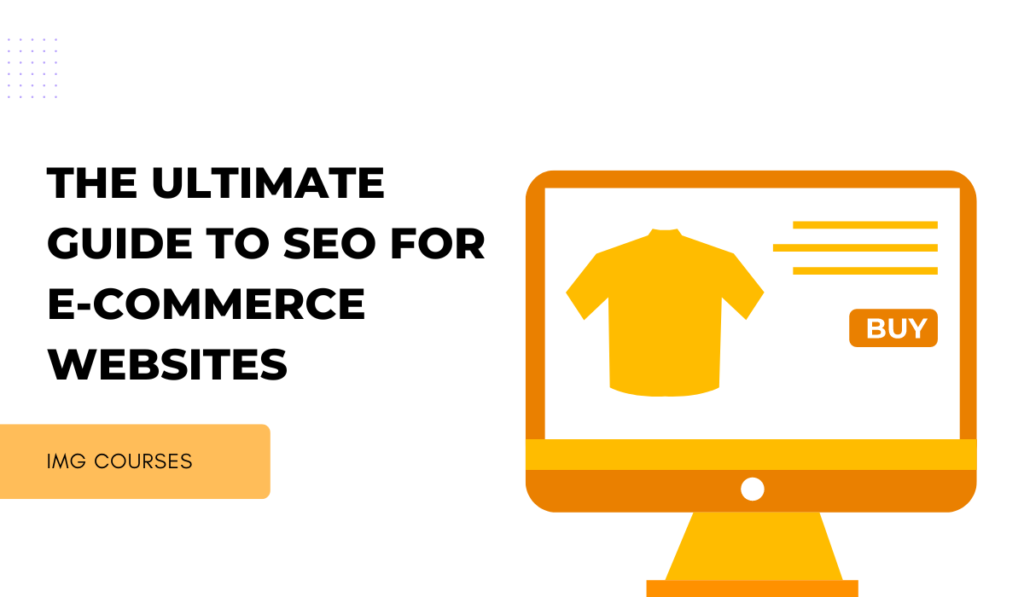
In the highly competitive world of e-commerce, standing out among thousands of competitors is crucial. One of the most effective ways to increase visibility and drive organic traffic to your online store is through Search Engine Optimization (SEO). This comprehensive guide will walk you through essential SEO strategies tailored specifically for e-commerce websites, helping you enhance your search engine rankings, boost your visibility, and ultimately increase sales.
Understanding the Basics of E-commerce SEO
Before diving into advanced strategies, it’s important to understand the fundamentals of SEO. SEO for e-commerce involves optimizing your online store so that search engines like Google can easily crawl, index, and rank your product pages. The goal is to attract more organic traffic to your site, improving your chances of converting visitors into customers.
1. Keyword Research: The Foundation of SEO
Effective SEO starts with thorough keyword research. For e-commerce websites, this means identifying keywords that your potential customers are searching for. Here’s how to approach it:
- Use Keyword Tools: Leverage tools like Google Keyword Planner, Ahrefs, or SEMrush to find relevant keywords with high search volume and low competition.
- Focus on Long-Tail Keywords: These are longer, more specific phrases that are less competitive and often have higher conversion rates. For example, instead of “shoes,” target “women’s running shoes size 10.”
- Analyze Competitors: Look at the keywords your competitors are ranking for. Tools like Ahrefs’ Site Explorer or SEMrush’s Competitor Analysis can be invaluable.
2. Optimizing Product Pages
Product pages are the heart of any e-commerce site. To rank well, they need to be optimized for both users and search engines:
- Title Tags and Meta Descriptions: Craft compelling title tags and meta descriptions that include your primary keywords. Keep them under 60 characters for title tags and 155 characters for meta descriptions.
- High-Quality Images: Use high-resolution images with descriptive file names and alt text that includes relevant keywords. This not only improves SEO but also enhances user experience.
- Unique Product Descriptions: Avoid using manufacturer descriptions. Write unique, keyword-rich descriptions that provide value to the customer and highlight the benefits of your products.
3. Implementing Technical SEO
Technical SEO is crucial for ensuring that search engines can crawl and index your site effectively. Here are some key technical aspects to focus on:
- Mobile Optimization: Ensure your site is mobile-friendly. Google’s mobile-first indexing means that the mobile version of your site is what gets indexed and ranked.
- Fast Loading Speed: Use tools like Google PageSpeed Insights to analyze and improve your site’s loading speed. Compress images, leverage browser caching, and minimize JavaScript to enhance performance.
- Secure Your Site with HTTPS: Security is a ranking factor. Ensure your site is served over HTTPS to protect user data and improve trust.
4. Creating High-Quality Content
Content is king in the world of SEO. For e-commerce sites, creating high-quality, informative content can drive traffic and improve rankings:
- Blog Posts and Guides: Create blog posts, buying guides, and how-to articles related to your products. For example, a blog post on “How to Choose the Perfect Running Shoes” can attract organic traffic.
- User-Generated Content: Encourage reviews, testimonials, and Q&A sections on product pages. User-generated content can improve trust and boost SEO by adding fresh, relevant content.
- Rich Media: Incorporate videos, infographics, and interactive content to engage users and keep them on your site longer.
5. Optimizing for Local SEO
If you have a physical store or serve specific geographic areas, local SEO is essential:
- Google My Business: Claim and optimize your Google My Business listing with accurate information, high-quality images, and regular posts.
- Local Keywords: Use local keywords in your product descriptions, titles, and meta descriptions. For example, “buy running shoes in New York City.”
- Local Citations: Ensure your business is listed in local directories and review sites like Yelp, TripAdvisor, and local Chamber of Commerce websites.
6. Building Backlinks
Backlinks are a crucial factor in SEO. They signal to search engines that your site is trustworthy and authoritative:
- Quality over Quantity: Focus on acquiring high-quality backlinks from reputable sites in your industry.
- Guest Blogging: Write guest posts for reputable blogs in your niche. Include links back to your product pages or blog posts.
- Create Shareable Content: Develop infographics, studies, or tools that others in your industry would want to link to.
7. Using Analytics and Monitoring Performance
SEO is an ongoing process. Use analytics tools to track your performance and make data-driven decisions:
- Google Analytics: Monitor your traffic, user behavior, and conversion rates. Set up goals and track key metrics like bounce rate, average session duration, and pages per session.
- Google Search Console: Use this tool to monitor your site’s performance in Google search. Check for crawl errors, indexing issues, and performance metrics.
- Regular Audits: Conduct regular SEO audits to identify and fix issues. Look for broken links, duplicate content, and other technical problems that could impact your rankings.
Conclusion
Implementing a solid SEO strategy for your e-commerce website can significantly enhance your online visibility, attract more traffic, and increase sales. By focusing on keyword research, optimizing product pages, enhancing technical SEO, creating high-quality content, and building backlinks, you can establish a strong online presence. Remember, SEO is a continuous process, so keep monitoring your performance, adapting to changes in search engine algorithms, and refining your strategies to stay ahead of the competition. With persistence and the right approach, you can achieve sustainable growth and success in the e-commerce space.

